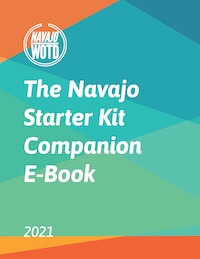sihs nah jin nih
In Navajo tradition, there exists a number of sacred mountains (dził) that serve as boundary markers for the Navajo people. The traditional homeland is bordered by four mountains, often called the Four Sacred Mountains.
Sis Naajiní (also Tsisnaajini, Sis na’jin) today is called Blanca Peak and is located in Colorado. Blanca Peak creates the Eastern point of the traditional Navajo land, demarcated according to the plans of First Man and First Woman of Navajo tradition, as each contained the ability to form great things using the songs and materials they carried with them.
The Navajo creation stories tell of a series of worlds that living things had to pass through to get to the current terrestrial world. It began with the first world where spirits lived (often called the Black world, or the Red world, or First Tree, or First Speech). It is said that the First Man and First Woman were not alone when they were created – that Coyote was also living in a human form. As time went, the first group of people began to grow as they found each other and were eventually forced to leave the First World because they carried out many transgressions with each other.
In each world, they gained more people (in the form of the Insect people, the Bird people, and more). And in each world, the people did not live in a good way, leading to their forced expulsion by the greater spirits of each world. The group had to inevitably climb out into new worlds above.
These are stories told by those who know the songs (sin or hátáál), never singing them nor chanting them before the first snowfall as tradition dictates. These chants are comprised of many ‘stanzas’, each with an element of repetition, as goes the Navajo story telling way. The retelling of each of the trials and advancements that the first people made are contained in hundreds of these distinct sections, forming a narrative that is sung over many nights.
Sis Naajiní is a part of that narrative. Formed using the ground brought up from the previous world, Blanca Peak sits to the east (ha’a’aah) and is associated with the color white. If you recall the earlier posts about the Four Sacred Directions, the prayers and songs associated with traditional early morning practices are directed at these mountains. So it follows that Sis Naajiní is also associated with free and balanced thought.
After the mountain was formed, the First Man and First Woman anchored the mountain to the earth with a bold of white lightening (astiniltł’ish), and covered it in a blanket of daylight. It was also decorated with White Shell, dark clouds, and a male rain. Some of the Holy People, beginning with White Bead Boy, entered into the mountain to live in it. The bear was sent to guard the entrance of his home.
The mountains themselves were brought to life by separate winds that entered into them. For Sis Naajiní, Spotted Wind (White Wind) gave it life.
You can see from this short narrative that there are many aspects contained in the traditional Navajo songs. Each living thing experiences its own trials, and they are also included throughout the stories. The worlds and directions and people are numerous, and each has its place in the Navajo creation tradition.
